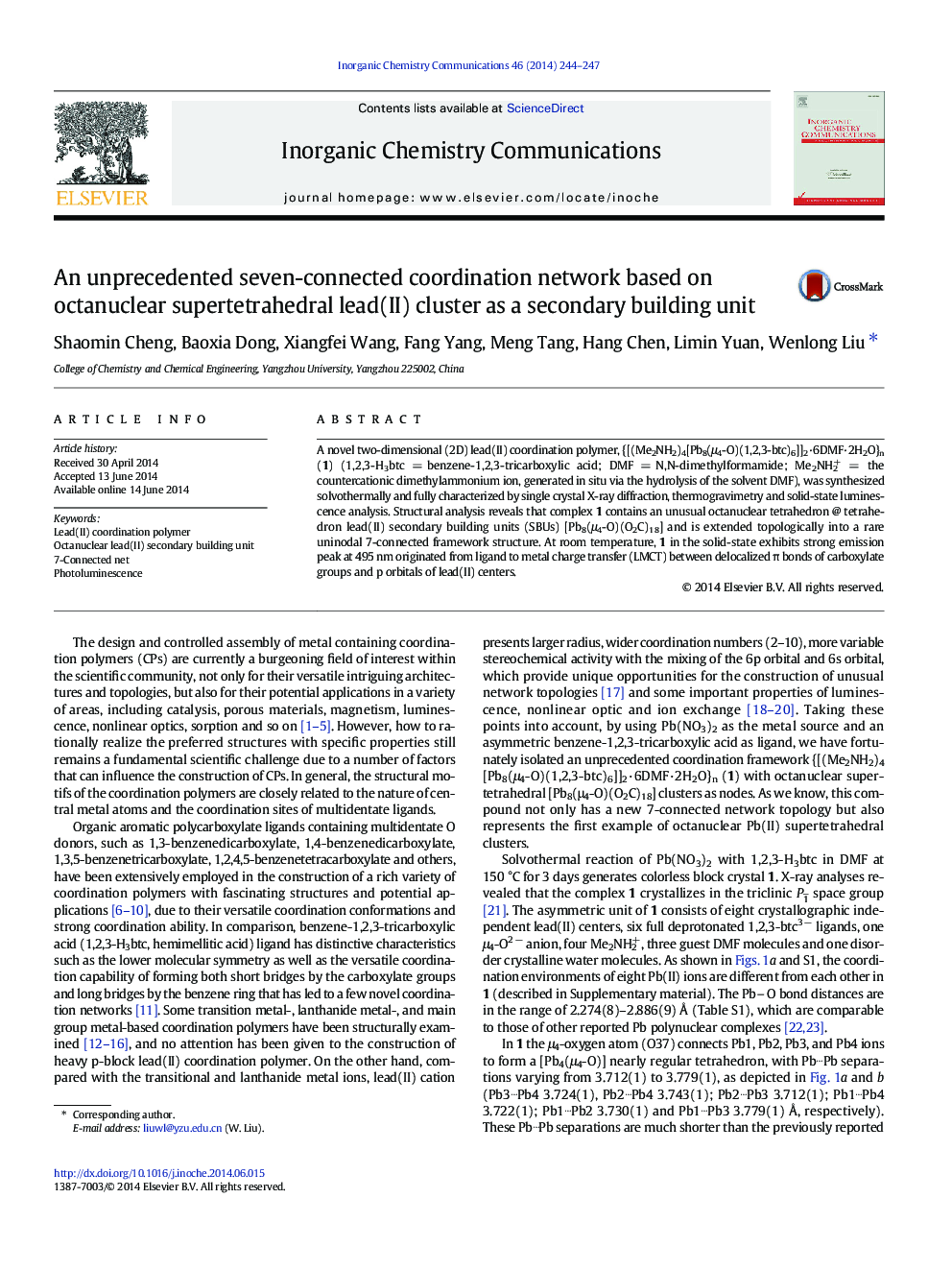| کد مقاله | کد نشریه | سال انتشار | مقاله انگلیسی | نسخه تمام متن |
|---|---|---|---|---|
| 1303605 | 1498944 | 2014 | 4 صفحه PDF | دانلود رایگان |

• A new coordination polymer based on novel octanuclear lead(II) SBUs was constructed.
• A rare uninodal 7-connected framework structure is reported.
• The photoluminescent property of this compound has been studied.
A novel two-dimensional (2D) lead(II) coordination polymer, {[(Me2NH2)4[Pb8(μ4-O)(1,2,3-btc)6]]2·6DMF·2H2O}n (1) (1,2,3-H3btc = benzene-1,2,3-tricarboxylic acid; DMF = N,N-dimethylformamide; Me2NH2+ = the countercationic dimethylammonium ion, generated in situ via the hydrolysis of the solvent DMF), was synthesized solvothermally and fully characterized by single crystal X-ray diffraction, thermogravimetry and solid-state luminescence analysis. Structural analysis reveals that complex 1 contains an unusual octanuclear tetrahedron @ tetrahedron lead(II) secondary building units (SBUs) [Pb8(μ4-O)(O2C)18] and is extended topologically into a rare uninodal 7-connected framework structure. At room temperature, 1 in the solid-state exhibits strong emission peak at 495 nm originated from ligand to metal charge transfer (LMCT) between delocalized π bonds of carboxylate groups and p orbitals of lead(II) centers.
Reaction of Pb(NO3)2 with benzene-1,2,3-tricarboxylic acid yields an unprecedented seven-connected coordination bilayer anion network with octanuclear supertetrahedral lead(II) clusters as SBUs.Figure optionsDownload as PowerPoint slide
Journal: Inorganic Chemistry Communications - Volume 46, August 2014, Pages 244–247